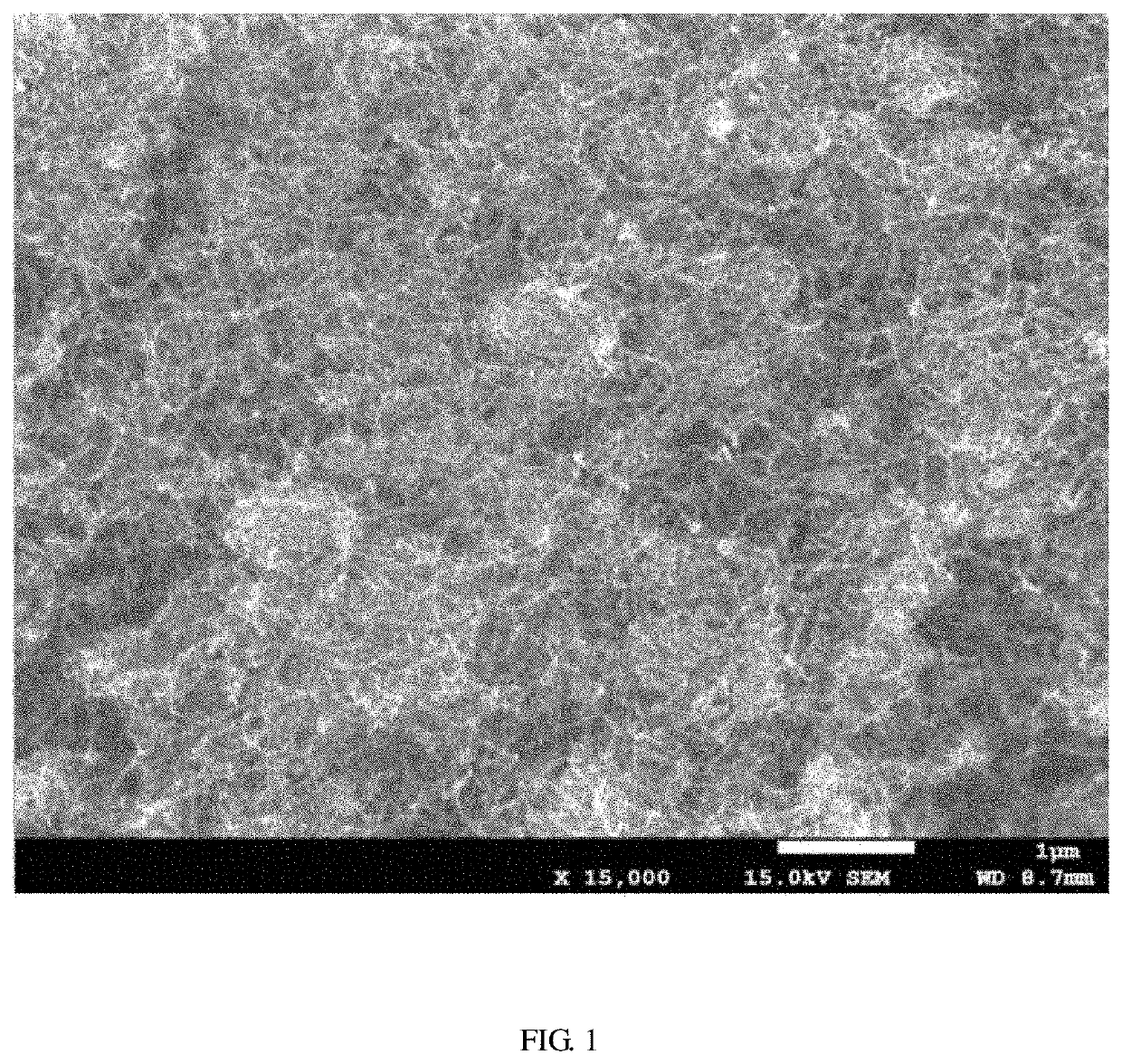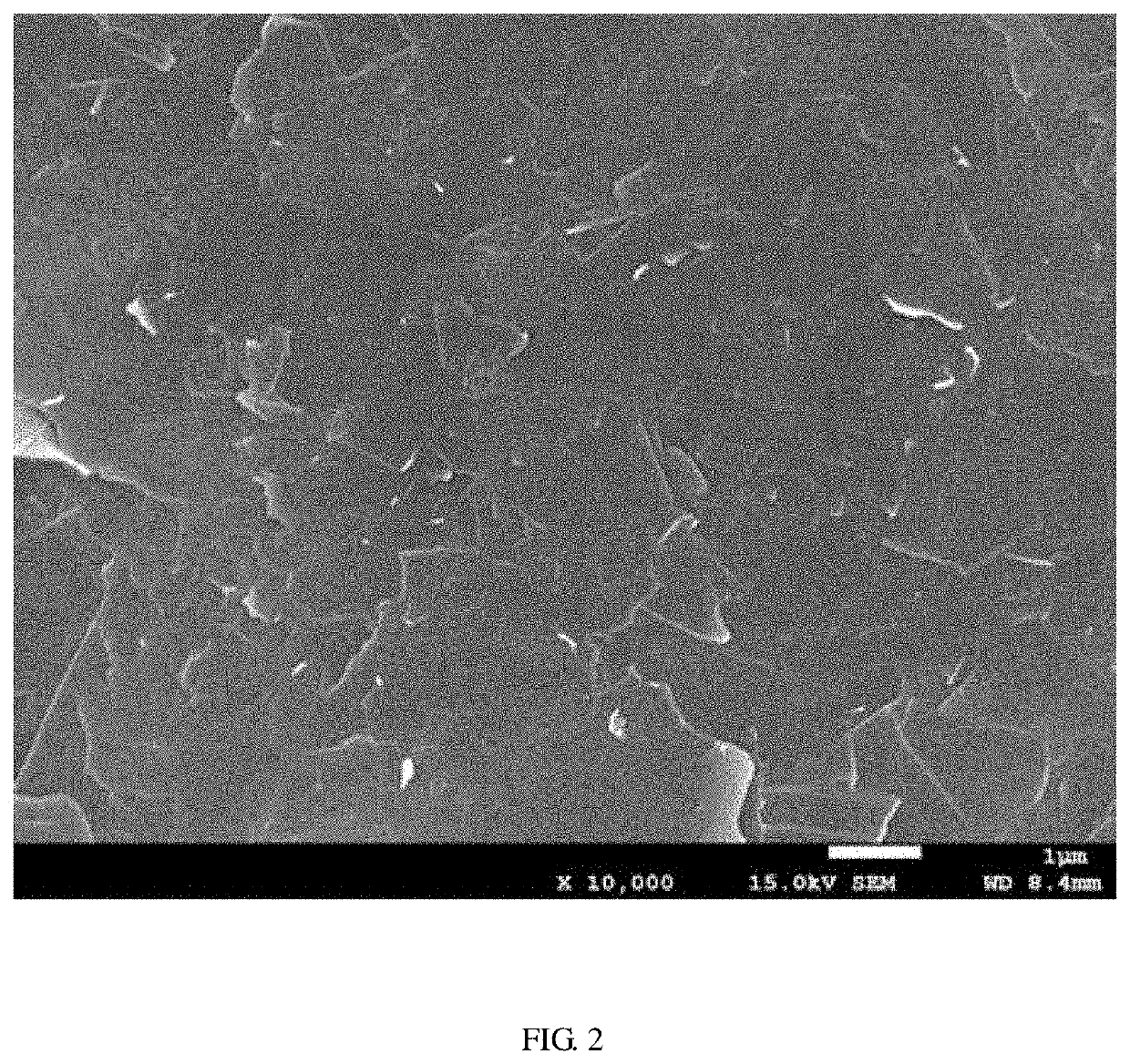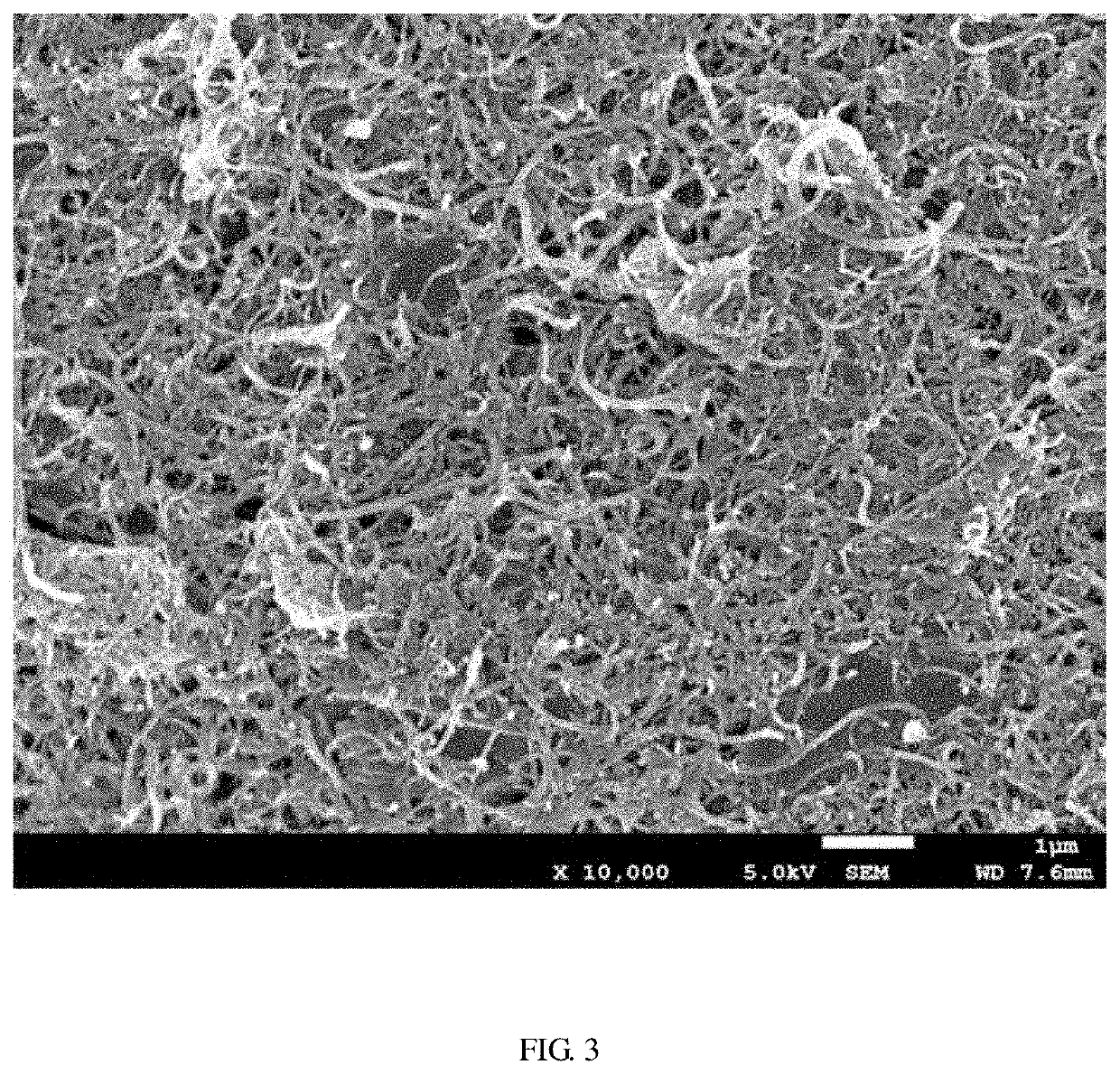Conductive Carbon Material Dispersing Agent and High-Conductivity Slurry for Lithium Battery
a technology of conductive carbon material and dispersing agent, which is applied in the direction of cell electrodes, electrical equipment, cell components, etc., can solve the problems of affecting the performance of affecting the performance of the conductive carbon in the positive electrode causing poor etc., to achieve excellent effect, improve the conductivity of the pole piece, and improve the performance of the lithium battery
- Summary
- Abstract
- Description
- Claims
- Application Information
AI Technical Summary
Benefits of technology
Problems solved by technology
Method used
Image
Examples
example 1
[0038]In this example, 12 g carbon nanotube was taken as the conductive carbon material, 6 g styrene-maleic anhydride copolymer was taken, whose synthesis method can be learned with reference to Document 3 (Li Xiaohua, Qiang Xihuai, Hong Xinqiu. Styrene-maleic Anhydride Copolymer and Application [J]. Leather Science and Engineering, 2009, 19(2):42-46.), and 384 g N-methylpyrrolidone was taken as the solvent. Firstly, the styrene maleic anhydride copolymer was pre-dissloved in the N-methyl pyrrolidone, then the carbon nanotube was added, mechanical stirring and pre-dispersing were carried out for 10 min, and sanding and dispersing were carried out further for 1.5 h to obtain a carbon nanotube conductive slurry A1.
example 2
[0039]In this example, 14 g of carbon nanotube was taken as the conductive carbon material, 7 g polyvinyl formal was taken, and 379 g N-methyl pyrrolidone (NMP) was taken as the solvent. The dispersing agent was pre-dissolved in NMP, then the conductive carbon material was added, mechanical stirring and pre-dispersing was carried out for 10 min, and sanding and dispersing were carried out further for 1.5 h to obtain a carbon nanotube conductive slurry A2.
example 3
[0040]In this example, 2.0 g carbon nanotube material was taken as the conductive carbon material, 0.4 g BYK Chemie BYK-9076 was taken, and 397.6 g pure water was taken as the solvent. The dispersing agent was pre-dissolved in pure water, then the conductive carbon material was added, mechanical stirring and pre-dispersing was carried out for 10 min, and sanding and dispersing were carried out further for 1.5 h to obtain a carbon nanotube conductive slurry A3.
PUM
| Property | Measurement | Unit |
|---|---|---|
| specific surface area | aaaaa | aaaaa |
| conductive | aaaaa | aaaaa |
| conductivity | aaaaa | aaaaa |
Abstract
Description
Claims
Application Information
 Login to View More
Login to View More - R&D
- Intellectual Property
- Life Sciences
- Materials
- Tech Scout
- Unparalleled Data Quality
- Higher Quality Content
- 60% Fewer Hallucinations
Browse by: Latest US Patents, China's latest patents, Technical Efficacy Thesaurus, Application Domain, Technology Topic, Popular Technical Reports.
© 2025 PatSnap. All rights reserved.Legal|Privacy policy|Modern Slavery Act Transparency Statement|Sitemap|About US| Contact US: help@patsnap.com



